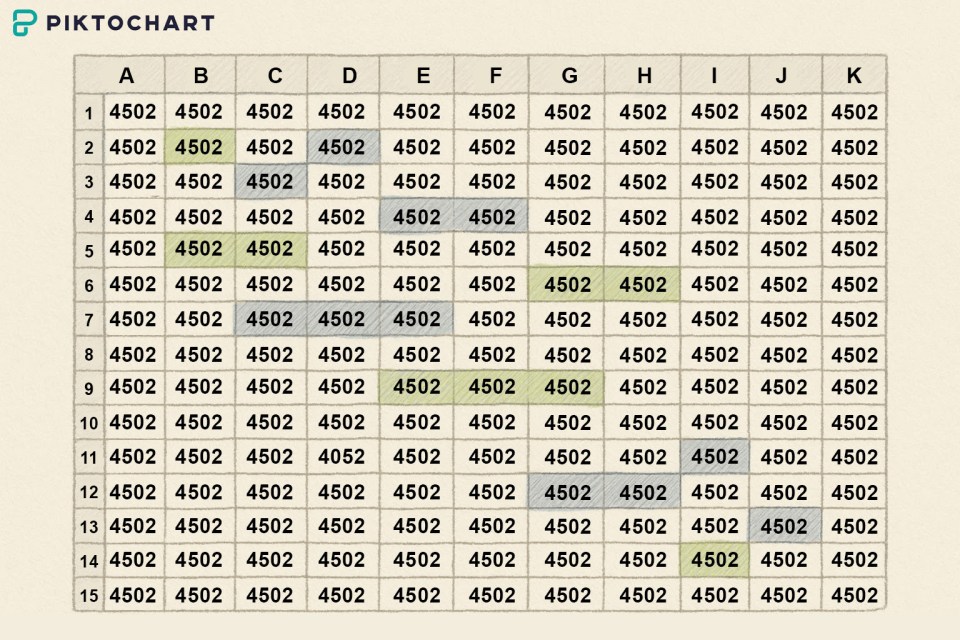IT looks like it should be easy when you first look at it.
But it might be harder than you think to distinguish the odd mistake in this number jumble.
The chart features a sea of identical numbers, each reading 4502.
However, there one different number, hiding in plain sight.
And it takes someone with eyes as sharp as a hawk to spot the odd one out – especially if you manage to do it in less than 20 seconds.
Ai Ching Goh, co-founder of Piktochart, said of the brainteaser: “This campaign is a fun reminder of how easy it is to miss small details, especially in data-heavy designs.
Try out more Brainteasers
“Imagine you’re at work and your boss asks you to check over the latest numbers.
“Would you be able to spot the mistake?”
If you’re struggling, it’s a good idea to take the puzzle column by column.
Scroll down through the rows as you flit your eyes up and down, trying to spot the number that doesn’t fit.
If things aren’t getting any easier, try splitting the box of numbers into quarters – taking one at a time.
And if your frustration is getting the better of you, you can find the answer below.
Brainteasers are excellent for your noggin because they stimulate cognitive function, improve problem-solving skills and enhance overall mental agility.
They also challenge different areas of the brain, including memory, logic and spatial reasoning.
So what’s the benefit exactly? Improved neuroplasticity, which is the brain’s ability to adapt and form new neural connections.
As well as this, activities like brainteasers, puzzles and riddles require you to think critically, which also sharpens your analytical and reasoning skills.
If you want to continue to challenge your brain further, you can find a range of optical illusions on our website.
Different images can test different parts of your brain.
How can optical illusions and brainteasers help me?
Engaging in activities like solving optical illusions and brainteasers can have many cognitive benefits as it can stimulate various brain regions.
Some benefits include:
- Cognitive stimulation: Engaging in these activities challenges the brain, promoting mental agility and flexibility.
- Problem-solving skills: Regular practice enhances analytical thinking and problem-solving abilities.
- Memory improvement: These challenges often require memory recall and can contribute to better memory function.
- Creativity: They encourage thinking outside the box, fostering creativity and innovative thought processes.
- Focus and attention: Working on optical illusions and brainteasers requires concentration, contributing to improved focus.
- Stress relief: The enjoyable nature of these puzzles can act as a form of relaxation and stress relief.
This image of pearls might be a good way to test your eyesight, while this maths puzzle helps improve your critical thinking.
What about testing your eyesight by spotting the word ‘Ball’ in this mind-boggling illusion?
Or if numbers is more your game, try and spot the number 879 in this sea of 876s.

